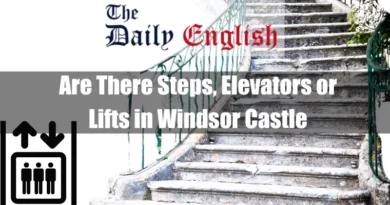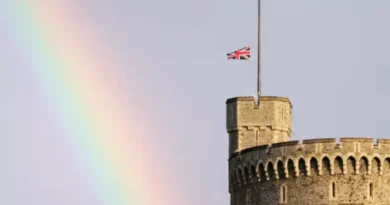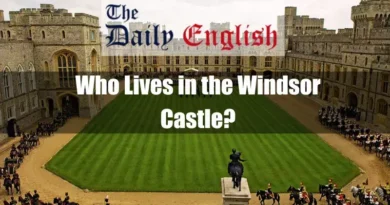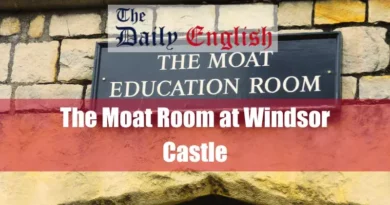How Far is Hampton Court Palace from Windsor Castle?
Key Takeaways
| Category | Key Takeaways |
|---|---|
| Geographical Context | – Hampton Court Palace: Located southwest of London along the River Thames, famous for its Tudor architecture and royal history. – Windsor Castle: Situated west of London in Windsor, known for being the oldest and largest occupied castle. |
| Driving Distance | – Route 1 (M3 & A308): 18.6 miles, approx. 39 minutes. – Route 2 (M25): 22.5 miles, approx. 44 minutes. – Route 3 (M3): 19.2 miles, approx. 47 minutes. |
| Public Transport Distance | – Windsor & Eton Riverside: 1 hour 32 minutes, multiple transfers needed. – Windsor & Eton Central: 2 hours 18 minutes, requires transfers at Slough and London Paddington. – Castle Hill: 1 hour 54 minutes, similar transfers to Windsor & Eton Riverside. |
| Walking Distance | – Route 1 (A308): 14.4 miles, approx. 5 hours 14 minutes. – Route 2 (B378 & A308): 15.2 miles, approx. 5 hours 34 minutes. – Route 3 (A312): 15.0 miles, approx. 5 hours 31 minutes. |
| Cycling Distance | – Route 1 (A308): 18.5 miles, approx. 1 hour 32 minutes. – Route 2 (A308 & A30): 18.2 miles, approx. 1 hour 37 minutes. – Route 3 (B358): 18.1 miles, approx. 1 hour 39 minutes. |
| Travel Method Comparison | – Driving: Flexible, affected by traffic. – Public Transport: Stress-free but requires transfers. – Walking: Immersive but time-consuming. – Cycling: Balances speed with enjoyment of scenery. |
| Travel Tips | – Best Times to Travel: Avoid peak hours, travel early or late for fewer crowds. – Accessibility: Driving or public transport is better for mobility issues. – Cost Considerations: Consider fuel, parking, train tickets, and bike rentals. |
Let’s discuss in detail:
Introduction
Hampton Court Palace and Windsor Castle are England’s most famous historical landmarks, offering a glimpse into the country’s rich royal past. Understanding the distance between these sites is key for visitors who wish to explore both in one day or over a short period. While the straight-line distance might seem simple, the travel experience varies depending on the mode of transport you choose.
This article will guide you through the various options, helping you plan your journey efficiently.
Geographical Context
Hampton Court Palace is located southwest of London, along the River Thames. This iconic palace, once home to King Henry VIII, boasts sprawling gardens, intricate Tudor architecture, and vast royal apartments. Its proximity to London makes it a popular destination for domestic and international tourists.
On the other hand, Windsor Castle is situated west of London in the charming town of Windsor. As the world’s oldest and largest occupied castle, it is a royal residence and a working palace. The castle’s extensive grounds, St. George’s Chapel, and the State Apartments are just a few attractions that draw millions of visitors annually.
Distance Between Hampton Court Palace and Windsor Castle
Driving Distance: Routes and Travel Times
For those who prefer the convenience and control of driving, there are several routes to consider, each with its benefits:
Route 1: via M3 and A308
This route is often the fastest, covering 18.6 miles (29.9 km) in about 39 minutes. The M3 offers a direct route from London, connecting with the A308, which leads straight to Windsor. This option is ideal for those who wish to avoid the busier M25 motorway.
Route 2: via M25
Spanning 22.5 miles (36.2 km), this route takes approximately 44 minutes. The M25, known as the London Orbital Motorway, circles Greater London and connects with the M4, which takes you close to Windsor. Although slightly longer, this route can be more efficient depending on traffic conditions, particularly if travelling from the northern or eastern parts of London.
Route 3: via M3
This alternative via the M3 covers 19.2 miles (30.9 km) and typically takes around 47 minutes. While this route is similar to the first, it may involve navigating some local roads near the palace, which could add to your travel time.
Range of Travel Time: The times mentioned are under optimal conditions. However, travel time can increase due to traffic congestion, especially during peak hours, weekends, or roadworks.
It’s advisable to check traffic updates before starting your journey.

Public Transport Distance: Train and Travel Times
Public transport offers a reliable alternative to driving, with several train routes connecting the two sites. However, the journey by train requires careful planning due to multiple transfers and scheduling considerations:
From Windsor & Eton Riverside:
This route takes approximately 1 hour and 32 minutes. Depending on the specific trains available, you’ll need to transfer to Clapham Junction and possibly again. The benefit of this route is that it provides direct connections to London Waterloo, making it a good choice if you combine your trip with a visit to central London.
From Windsor & Eton Central:
The journey lasts 2 hours and 18 minutes, making it the longest option. This route involves a transfer at Slough and another at London Paddington, followed by a connection to Hampton Court. While longer, this route passes through some picturesque parts of the Thames Valley, offering a scenic journey.
From Castle Hill:
This option takes around 1 hour and 54 minutes and involves similar transfers to the first route. The Castle Hill area of Windsor is close to the castle, providing easy access to the station, though the travel time remains significant.
Range of Travel Time: Train travel times are subject to change based on the day of the week, time of day, and any ongoing rail maintenance. Additionally, transferring trains can add unpredictability to the journey, so checking the train schedules ahead of time is essential.

Walking Distance and Travel Time
Walking between Hampton Court Palace and Windsor Castle is an ambitious but rewarding option for those with the time and stamina. The walking routes take you through a mix of urban and rural landscapes, offering a unique way to experience the English countryside:
Route 1: via A308
This 14.4-mile (23.2 km) route typically takes about 5 hours and 14 minutes to complete. The A308 is a relatively direct path, requiring walking along busy roads.
Route 2: via B378 and A308
This route covers 15.2 miles (24.5 km) and takes approximately 5 hours and 34 minutes. This option includes a mix of quieter roads and paths, offering a slightly longer but potentially more pleasant walk.
Route 3: via A312
The final walking option covers 15.0 miles (24.1 km) and takes about 5 hours and 31 minutes. This route combines main roads with quieter paths, providing a balanced walking experience.
Range of Travel Time: Walking times can vary greatly depending on your pace, the number of breaks you take, and the weather. This can be a fulfilling journey for those who enjoy long walks, but it is important to plan rest stops and refreshments along the way.

Cycling Distance and Travel Time
Cycling offers a middle ground between walking and driving, combining speed with the opportunity to enjoy the scenery. The routes for cycling are similar to those for driving, with some adjustments for safer, cyclist-friendly paths:
Route 1: via A308
This route spans 18.5 miles (29.8 km) and typically takes 1 hour and 32 minutes. It’s a direct and relatively fast option, though some parts of the A308 can be busy, requiring caution.
Route 2: via A308 and A30
At 18.2 miles (29.3 km), this route takes approximately 1 hour and 37 minutes. It offers a slightly different path, incorporating parts of the A30, which can be less congested depending on the time of day.
Route 3: via B358
This longest cycling route covers 18.1 miles (29.1 km) in about 1 hour and 39 minutes. It’s ideal for those who avoid main roads as much as possible, offering a more relaxed cycling experience.
Range of Travel Time: Cycling times depend on your fitness level, the type of bike you’re using, and traffic conditions. Cycling can be a great way to cover the distance while also enjoying the freedom of stopping to explore interesting spots along the way.
Comparing Travel Methods

When deciding how to travel between Hampton Court Palace and Windsor Castle, each method has its unique advantages and disadvantages:
- Driving is a flexible option, ideal for those who prefer control over their schedule. However, it can be affected by traffic, especially during peak hours.
- Public Transport offers a relaxing experience without the stress of navigating, though it requires careful planning due to multiple transfers.
- Walking provides an immersive experience, but the distance makes it impractical due to the required time and physical endurance.
- Cycling strikes a balance between speed and engagement with the environment. It is quicker than walking but still allows for enjoyment of the sights.
Travel Tips
To make the most of your journey between Hampton Court Palace and Windsor Castle, consider the following tips:
- Best Times to Travel: Avoid peak hours if driving or using public transport to minimize delays. Early mornings or late afternoons can be the best travel time, offering fewer crowds and better traffic conditions.
- Accessibility: Driving or public transport might be the most suitable option for mobility issues. Walking and cycling can be physically demanding, so assess your fitness level and comfort before choosing these methods.
- Cost Considerations: Factor in the costs of fuel, parking, train tickets, and bike rentals, if applicable. Driving may incur additional costs for parking, especially in Windsor, where spaces can be limited and expensive.
Conclusion
The distance between Hampton Court Palace and Windsor Castle can be navigated in several ways, each offering a different experience. Whether you drive, take public transport, walk, or cycle, each option allows you to enjoy the journey between two of England’s most iconic royal residences.
Planning your route based on your preferences, time constraints, and physical ability will ensure a smooth and enjoyable trip.
FAQ
What’s the driving distance and time between Hampton Court Palace and Windsor Castle?
The distance is approximately 18.6 miles via the M3 and A308, taking about 39 minutes under normal traffic. Alternative routes like the M25 and M3 (19.2–22.5 miles) take 44–47 minutes. Traffic conditions can significantly impact travel time, especially during peak hours or near local events.
Which route is the fastest for driving between Hampton Court Palace and Windsor Castle?
The M3 and A308 route is the fastest, covering 18.6 miles in 39 minutes. This route avoids congested sections of the M25 and provides a more direct connection. It’s ideal for those prioritising speed over the scenery.
Can I cycle between Hampton Court Palace and Windsor Castle?
Yes, cycling is a viable option. The distances vary from 18.1 to 18.5 miles, depending on the route. The journey typically takes 1 hour 32 to 1 hour 39 minutes. Popular routes like the A308 and B358 offer smoother paths, but ensure that you follow designated cycling lanes for safety.
How long does walking between Hampton Court Palace and Windsor Castle take?
Walking between Hampton Court Palace and Windsor Castle takes approximately 5 hours 14 to 5 hours 34 minutes. The shortest route is 14.4 miles via the A308. Along the way, walkers can enjoy scenic views of the River Thames and local landmarks. Comfortable footwear and navigation aids are essential.
Are there public transport options between Hampton Court Palace and Windsor Castle?
Public transport is available, primarily via train and bus combinations. Travel takes 1 hour 32 to 2 hours due to multiple transfers, typically at Clapham Junction, Slough, or London Paddington. Trains from Hampton Court Station connect to Windsor & Eton Riverside or Windsor & Eton Central.
Is there a direct train between Hampton Court Palace and Windsor Castle?
No, direct trains are unavailable. Depending on the route, passengers must transfer at stations such as Clapham Junction or Slough. Journey times range from 1 hour 32 minutes to over 2 hours. Timetable planning is crucial to avoid delays.
Which stations serve between Hampton Court Palace and Windsor Castle?
Hampton Court Station serves Hampton Court Palace, while Windsor & Eton Riverside and Windsor & Eton Central are the nearest stations to Windsor Castle. Both Windsor stations require transfers for connections to Hampton Court.
How far is Hampton Court Palace from Windsor Castle by train?
The train journey covers a distance comparable to driving but involves multiple transfers. Depending on the transfer points and schedules, the total travel time is between 1 hour 32 minutes and 2 hours 18 minutes.
What’s the shortest walking route between Hampton Court Palace and Windsor Castle?
The shortest walking route is 14.4 miles via the A308, taking about 5 hours and 14 minutes. This route passes through pleasant suburban areas and along parts of the River Thames, making it an enjoyable journey for walking enthusiasts.
Can I take a boat between Hampton Court Palace and Windsor Castle?
No direct boat service exists between Hampton Court Palace and Windsor Castle. However, private boat hire or Thames River cruises may cover portions of the journey, offering a scenic and leisurely travel option.
Is cycling safe between Hampton Court Palace and Windsor Castle?
Cycling is generally safe, especially on quieter roads like the B358 or A308, which feature designated cycling paths. Cyclists should avoid peak traffic hours and have proper safety gear, including helmets and reflective clothing.
What’s the best travel method between Hampton Court Palace and Windsor Castle?
Driving via the M3 and A308 is the fastest and most convenient, taking 39 minutes. Public transport is an alternative but requires transfers while cycling offers an eco-friendly and scenic option. Choose based on your time, budget, and preference.
How far as the crow flies between Hampton Court Palace and Windsor Castle?
The straight-line distance is approximately 13 miles. This is shorter than any road or rail route due to the meandering River Thames and local road layouts.
Are there shuttles between Hampton Court Palace and Windsor Castle?
No direct shuttle service exists between the two landmarks. However, private tour operators occasionally offer door-to-door transport as part of a packaged experience.
How much does the train cost between Hampton Court Palace and Windsor Castle?
Train fares typically range from £15 to £25 for a round trip. Prices depend on the travel time, ticket type (peak or off-peak), and any railcard discounts applied.
What landmarks are along the Hampton Court Palace and Windsor Castle route?
Key landmarks include Bushy Park, the River Thames, and Runnymede, the site of the Magna Carta. Drivers and cyclists may also pass by charming villages such as Shepperton and Staines.
How long does it take to get to Hampton Court Palace from Windsor Castle during rush hour?
During rush hour, driving can take 50 minutes to over an hour. The M25 and M3 routes are particularly prone to congestion. Plan travel outside peak times to avoid delays.
What’s the most scenic route between Hampton Court Palace and Windsor Castle?
The M3 and A308 route offers beautiful countryside views and glimpses of the River Thames. Cycling along the Thames path or walking through Bushy Park adds to the scenic experience.
When’s the best time to travel to Hampton Court Palace from Windsor Castle?
The best time to travel is mid-morning or early afternoon to avoid rush hour traffic. Weekdays are typically quieter for driving, while weekends may be busy around landmarks.
What’s the route cost for cyclists between Hampton Court Palace and Windsor Castle?
Cycling is cost-free, except for personal expenses like food, water, and potential maintenance. It’s an economical and eco-friendly way to travel between the two historic sites.









